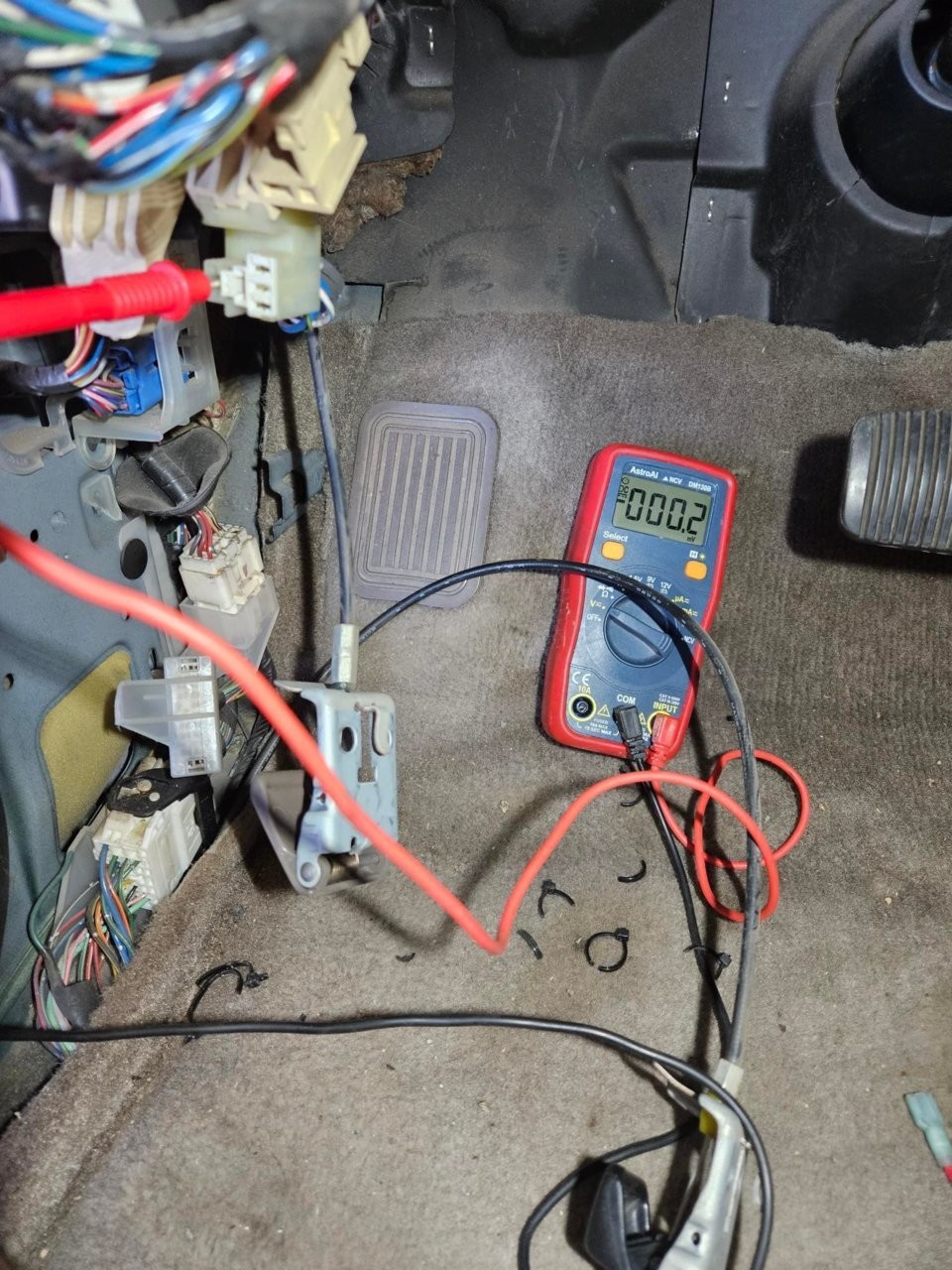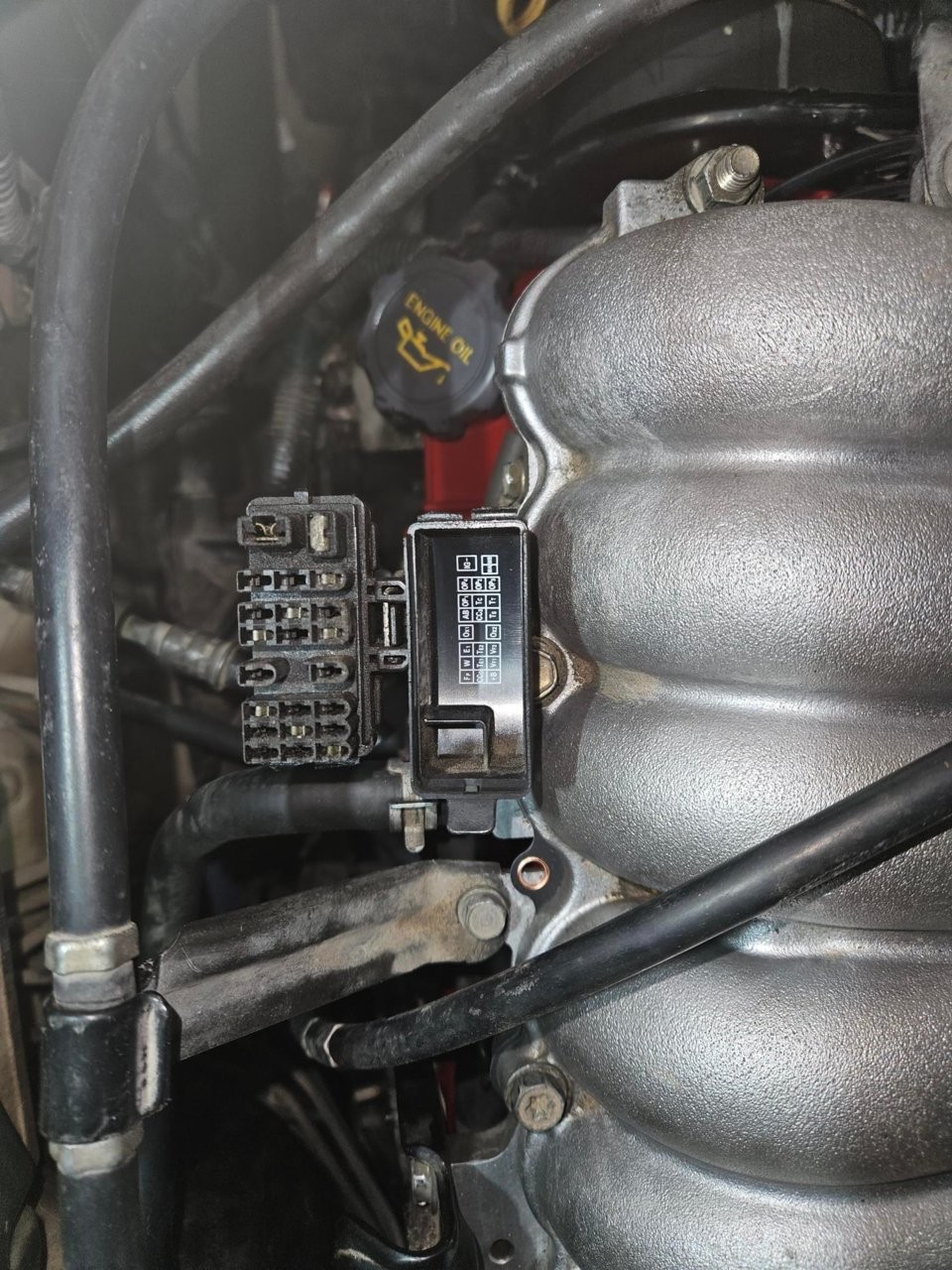Experiencing a “crank no start” issue with your 1997 Toyota 4Runner can be frustrating. If your engine turns over but fails to start, and you suspect a fuel delivery problem, checking the OBD2 power supply and related circuits is a crucial step in diagnosis. This guide will walk you through troubleshooting steps focusing on the power supply to the fuel pump system in your 1997 4Runner.
A common starting point for a no-start condition is to check for fuel delivery. If you’ve confirmed there’s fuel in the tank, but suspect it’s not reaching the engine, a simple test is to check for fuel pressure at the fuel line in the engine bay. In cases where the fuel line is dry, the issue might stem from a lack of power to the fuel pump.
To investigate this further, locate the fuel pump connector. A key check is to test for voltage at the blue-orange wire of this connector while cranking the engine. Absence of voltage here indicates a potential electrical supply issue.
 No Power Detected at Fuel Pump Connector Blue-Orange Wire in 1997 Toyota 4Runner
No Power Detected at Fuel Pump Connector Blue-Orange Wire in 1997 Toyota 4Runner
The Circuit Opening Relay (COR) plays a vital role in supplying power to the fuel pump. Unplugging what you believe to be the COR and testing for voltage at the blue-orange wire there during cranking is another important step. Again, no voltage at this point suggests an upstream electrical problem preventing power from reaching the fuel pump circuit.
 Lack of Voltage at Circuit Opening Relay (COR) Blue-Orange Wire During Cranking in 1997 Toyota 4Runner
Lack of Voltage at Circuit Opening Relay (COR) Blue-Orange Wire During Cranking in 1997 Toyota 4Runner
Some online guides suggest using the diagnostic port to jump the +B and Fp terminals to directly power the fuel pump for testing. However, it’s important to note that not all 1997 Toyota 4Runner diagnostic ports have an Fp pin. If your port lacks this pin, this direct test method will not be applicable.
 1997 Toyota 4Runner OBD2 Port Lacking FP Pin for Fuel Pump Test
1997 Toyota 4Runner OBD2 Port Lacking FP Pin for Fuel Pump Test
Before diving too deep into sensor issues, confirming basic power supply is essential. For instance, while a faulty camshaft position sensor can cause a no-start, testing for power at the fuel pump and COR should be prioritized in this scenario. A quick test using starter fluid can help confirm a fuel delivery issue. If spraying starter fluid allows the engine to briefly run, it strongly indicates a fuel supply problem, reinforcing the need to investigate the fuel pump power circuit.
In conclusion, when troubleshooting a crank no start issue in your 1997 Toyota 4Runner, particularly if you suspect fuel starvation, systematically checking the power supply to the fuel pump is critical. Start by verifying voltage at the fuel pump connector and the Circuit Opening Relay during cranking. Be aware of limitations with diagnostic port testing if the Fp pin is absent. By methodically eliminating power supply issues, you can effectively narrow down the potential causes of your 4Runner’s no-start condition.